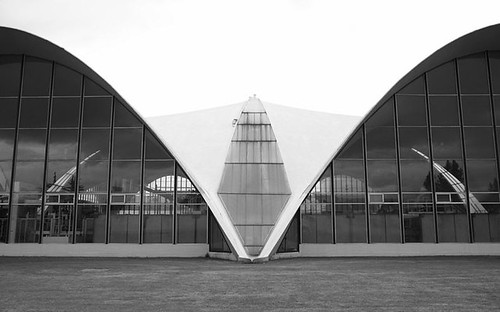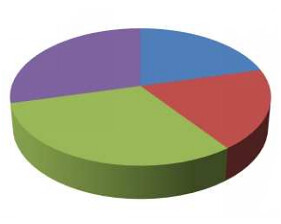 Sustainability Guidelines
Sustainability Guidelines Thermal Bridging Solutions in MSC
Thermal Bridging Solutions in MSC Carbon Working Group White Paper
Carbon Working Group White Paper Top 10 FAQs Answered
Top 10 FAQs Answered

Sustainability Guidelines for the Structural Engineer
Learn strategies for integrating sustainability into structural design. More

Thermal Bridging Solutions in MSC
April 2012 Issue of MSC: "Thermal Bridging Solutions: Minimizing Structural Steel's Impact on Building Envelope Energy Transfer." More

Carbon Working Group White Paper
Structures and Carbon: How Materials Affect the Climate. More info.

Top 10 Structural Sustainability FAQs
The LCA working group provides answers to 10 FAQs asked by conscientious structural engineers, more
Wednesday, March 21, 2012
Thermal Bridging Solutions in MSC
Categories :
The Thermal Steel Bridging Working Group has teamed with the American Insititute of Steel Construction (AISC) Thermal Steel Bridging Task Committee to publish an informative inset in Modern Steel Construction titled "Thermal Bridging Solutions: Minimizing Structural Steel's Impact on Building Envelope Energy Transfer." Download a free copy here: http://msc.aisc.org/globalassets/modern-steel/archives/2012/03/2012v03_thermal_bridging.pdf
Read more...
Structural Engineers Association of Northern California
Categories :
The engineers of Northern California have long been leaders in sustainable design. Many of the SEI Sustainability Committee's founding members hailed from this region. The SEAONC Sustainability Committee continues to meet and discuss advances in sustainable structures. See their latest news by following the link.
http://www.seaonc.org/member/committees/sustain.asp
Read more...
http://www.seaonc.org/member/committees/sustain.asp
What can structural engineers contribute to sustainable design?
Categories :
There is so much more a structural engineer can do! The first step is to become educated on the issues and different roles within a project that structural engineers can play. The report “Sustainability Guidelines for Structural Engineers” is a good starting point. It covers topics from what can be done with each of the common Structural Materials, to Reuse, Design for Deconstruction and Adaptability, Integration with other building systems, Infrastructure, Life Cycle Assessment, and Green Codes. In the meantime, we will be populating the Resources page of this site with useful links. Please check back frequently.
Read more...
What does structural engineering have to do with sustainability?
Categories :
Structural engineers affect the sustainability of our built environment in several ways. It is often said that sustainability stands on three legs of environmental, societal and economic sustainability. In terms of the environment, structures in the form of buildings and infrastructure take up an enormous amount of material resources and energy in their manufacture, transport and construction, and end of life. Structures are also the first item to be constructed on a project and can inhibit or enhance the subsequently installed systems that greatly affect operational energy performance. Thoughtful material selection and specification can drive responsible sourcing to reflect both environmental and societal stewardship. As engineers making material choices for infrastructure as well as buildings, we "spend" an enormous amount of carbon on behalf of the public. Long term energy performance of buildings is crucial to reducing are carbon emissions over time, but the carbon we embed in our structures through the materials we use is carbon we need to avoid spending now. Lastly, structural engineers are an indispensable player in the team of designers that connect the purse strings of the developer to the activities of the builder who procures and constructs the final product. Our communications and design decisions with these two parties largely determine whether the three pillars of sustainability can truly be upheld in balance.
Read more...
What does the SEI Sustainability Committee do?
Categories :
Please see our Mission & Goals. The primary task of committee members since inception of the committee in 2005 has been towards publication of the ASCE Report “Sustainability Guidelines for Structural Engineers.” Committee members are now pursuing specific objectives within various Working Groups. Working group meetings and the monthly conference calls for all members are posted on the Calendar. Our monthly meeting minutes are available here.
Read more...
2012 Structures Congress
Categories :
"Forge Connections in the Windy City!" The 43rd Structures Congress will be held in Chicago from March 29-31, 2012, at the Fairmont Chicago, Millennium Park.
The ASCE/SEI Structures Congress is your annual opportunity to broaden your technical knowledge, sharpen your business skills, deepen your understanding of cutting-edge research, and network with your peers and colleagues. You can view the full technical program by clicking here.
Be sure to attend the Sustainability track on Saturday, March 31 from 8:00am to 11:30. Also consider attending the Friday afternoon session (4:00pm) titled Sustainability and Steel.
Visit the 2012 Structures Congress website for full conference details.
http://content.asce.org/conferences/structures2012/index.html
International Concrete Sustainability Conference
Categories :
The International Concrete Sustainability Conference will be May 7-10 in Seattle, WA. http://www.concretesustainabilityconference.org/seattle/index.html
Read more...
NRMCA: Implementing Disaster Resilience Construction
Categories :
The National Ready Mixed Concrete Association (NRMCA) is holding workshops in 6 communities about Implementing Disaster Resilience Construction. See if they'll be in your community at http://www.nrmca.org/Education/Seminars/resilience.htm
Read more...
ASCE Task Committee on Sustainability
Categories :
Affiliations . ASCE . Links
The ASCE
Task Committee on Sustainable Design was established in 2009 with the
charge to:
·
Define the role of ASCE
in advancing sustainability
·
Review work by the USGBC
·
Develop an action plan for ASCE to advance the
principles of sustainable development
·
Determine if certification of civil engineers
would advance sustainable design
The primary outcome of their efforts to date was the
publication of a Sustainability
Action Plan for ASCE. Learn more by following the link.
IStructE Sustainability
Categories :
It’s often said that Europe has been leading the way in
sustainable design. The Institution of
Structural Engineers is the world’s largest membership organization
dedicated to structural engineering. The London-based organization believes
that structural engineers play a vital role in the sustainable development of
the build environment. Learn more about the organization and their tips for
greening design by following the link.
Proceedings of the 2011 Structures Congress, Las Vegas
Categories :
SEI Congress Papers (Available for purchase through ASCE)
- Carbon Emissions and Building Structure: What the Structural Engineer Needs to Know about Carbon in the Twenty-First Century
- Life Cycle Assessment Using ATHENA Impact Estimator for Buildings: A Case Study
- Integrating Life Cycle and Carbon Assessments: What Life Cycle Assessment Can Teach Structural Engineers about Design and Specification
- Infrastructure Sustainability: Streamlining Life Cycle Assessment for Practicing Bridge Engineers
Book: Sustainable Materials with Both Eyes Open
Categories :
Most of the emissions from industry arise from producing just five key materials and, as they're already made very efficiently, if we want to reduce their impact, we have to use less of them.This book is written to shown how we can use a lot less material without a lot of pain.
Allwood, Julian M.; Cullen, Jonathan M., et al. available at Amazon.co.uk
EPDs and PCRs: Developing environmental footprint standards
Categories :
Have you tried to understand the carbon footprint of a material
or product and been frustrated not knowing which data to use? Tried to
compare the environmental performance of similar products and been
unable to find an apples-to-apples comparison? These challenges and others are driving the development of Environmental
Product Declaration (EPD) standards that integrate a comprehensive
assessment of full lifecycle environmental impacts to enable reporting
of the "environmental footprint" of a material or product. Follow the link for more information.
EPDs and PCRs: Developing environmental footprint standards
Read more...
EPDs and PCRs: Developing environmental footprint standards
Thermal Bridging
Categories :
Thermal bridging occurs when materials that are poor insulators are in contact which creates a path for heat flow. Heat loss due to thermal bridging is a real concern where conductive materials, including those used for structure, penetrate fully or in part, the envelope of a building. Steel is highly conductive and is therefore the focus of the Thermal Steel Bridging Task Committee (TSBTC), which is hosted by the SEI Sustainability Committee. The original Thermal Bridging Working Group (TBWG) is now focusing on thermal bridging issues that result from materials other than steel. The purpose of the TBWG and the TSBTC is to define and quantify the problem of thermal bridging, identify solutions, and communicate findings to the building design and construction community. We have set the following goals:
Read more...
- Review existing and current research on thermal steel bridging, particularly research that aims to define the magnitude of energy loss.
- Review what other countries are doing to address thermal bridging.
- Identify and contact manufacturers that provide products that can be used as thermal breaks.
- Review any code implications of integrating thermal break material into building details.
- Review energy codes to determine the code requirements, if any, that relate to thermal bridging.
- Review how various energy modeling software programs handle thermal steel bridging.
- Compile options for details, including details developed by practitioners.
- Identify opportunities for presentations, papers, and articles.
- Write and publish a document, in conjunction with AISC, about thermal steel bridging.
Infrastrucutre
Categories :
The Infrastructure Working Group (IWG) primarily addresses transportation structures including bridges and tunnels. IWG supports the development and use of rating systems, codes, and standards that encourage and quantify sustainability and green design/construction/maintenance. The objectives of the Infrastructure Working Group are:
- Advocate for the acceptance of green/sustainability project rating systems within the bridge and tunnel industries.
-
Monitor, comment on, and engage with the various emerging sustainability project rating systems that apply to infrastructure, including Envision and Greenroads.
- Collect case study examples of sustainable infrastructure best practices that have been successfully implemented.
How do I join the SEI Sustainability Committee?
Categories :
Membership in the SEI Sustainability Committee is by application only. While we are always interested in talented and energetic new members, committee enrollment is limited. New members are accepted based on experience and/or interests, and are encouraged to participate beyond the minimum requirements our committee has set forth. Applicants must be current members of ASCE or SEI in order to participate. More information about membership and application procedures are available here. Current members are listed here.
Read more...
Green Globes
Categories :
The Green Globes system
is a design and management tool for assessing building environmental
performance. The rating system utilizes an online assessment program and offers
guidance for green building design, operation and management. In 2005, the
Green Globes Initiative was the first green building organization to be
accredited by the American National Standards
Institute (ANSI). Green Globes continues to be influential in sustainable
design, particularly in Canada, where the federal government adopted it. Follow
the link for more information.
Book: Sustainability Guidelines for the Structural Engineer
Categories :
The SEI Sustainability Committee has published guidelines to educate and advise structural engineers as they meet the challenge to design and construct a more sustainable built environment. The guidelines, a 300-page book, have been released through the ASCE press. The guidelines provide valuable information on a variety of topics of interest to the structural engineering community. While the intended audience is structural engineers, all design professionals will benefit from the content.
The guidelines are organized into five sections: Sustainable Design and Construction, Sustainable Strategies, Building Materials, Infrastructure, and Case Studies. Although many of the subjects presented are related, each section — and the related subsections — have been written to stand alone.
The committee is pleased to announce that the guidelines are now available for purchase through ASCE press. Find out how your firm can improve upon sustainability through its designs!
To view the table of contents please click here.
Green Codes
Categories :
The purpose of the Green Codes Working Group (GCWG) is to connect the structural design community with the myriad of green codes, standards, and rating systems that may impact their clients and work product. To accomplish this goal, the GCWG will:
- Provide information on green codes and standards related to green codes, and how their adoption may affect structural engineers in their practice and the specification of products and systems. Instruments monitored include LEED, CalGreen, GreenGlobes, and ASHRAE.
- Monitor the announcements from codes, standards, and rating-system developers, providing timely information on opportunities to submit public comments and cast ballots.
- Pursue opportunities to provide comments to advocacy groups and standards development organizations on behalf of ASCE SEI structural engineer members.
Subscribe to:
Posts (Atom)











